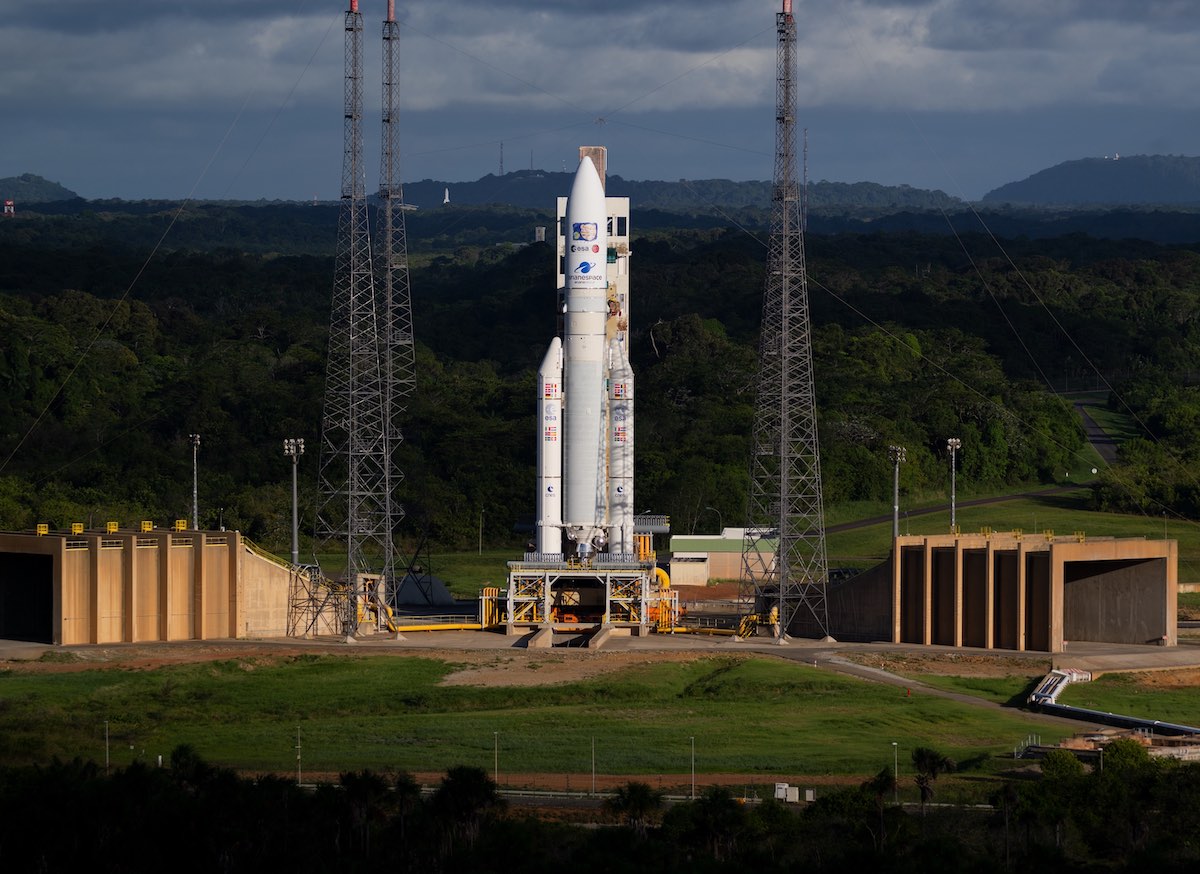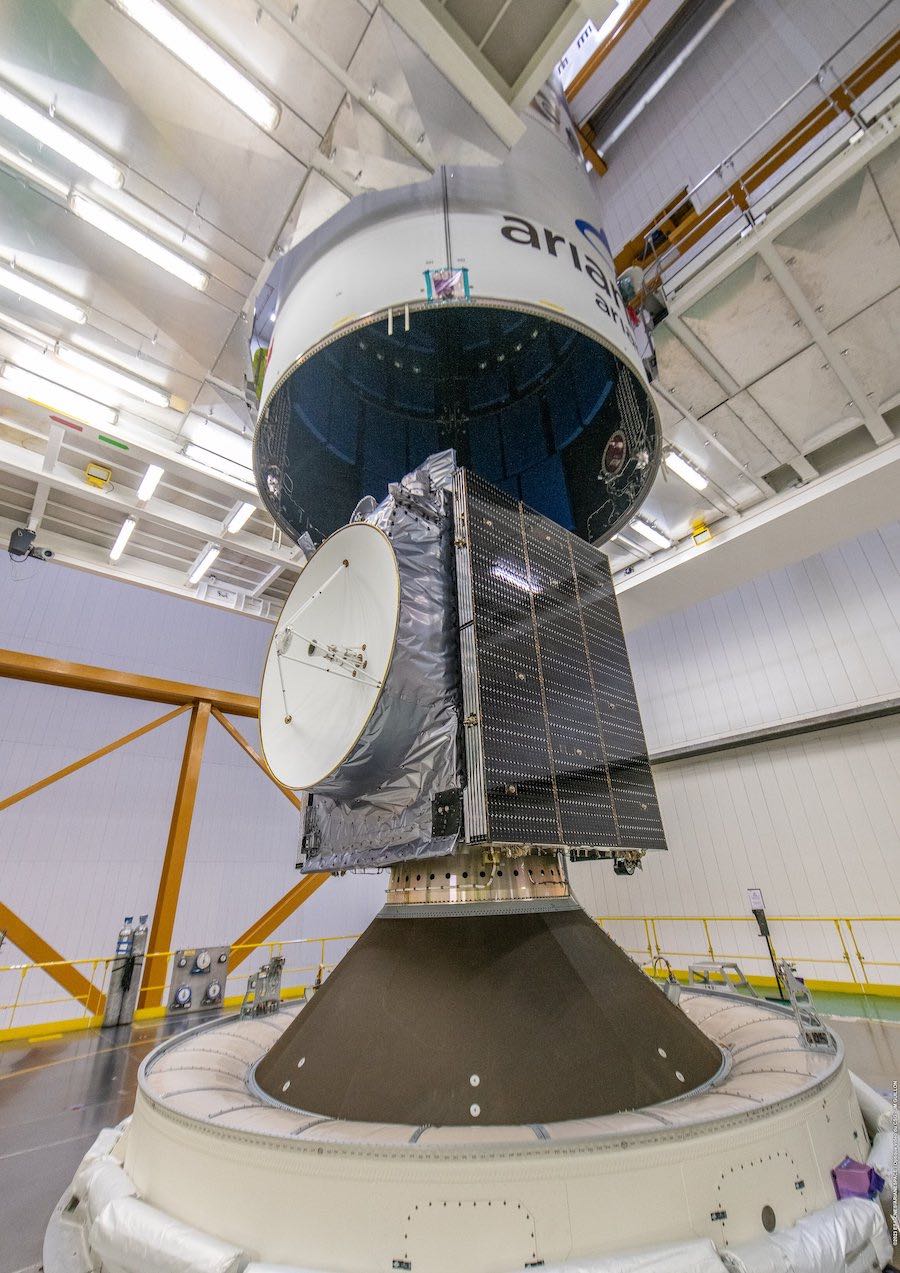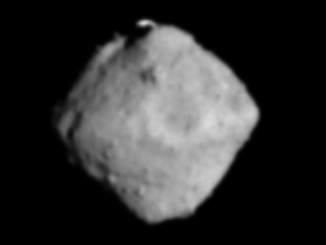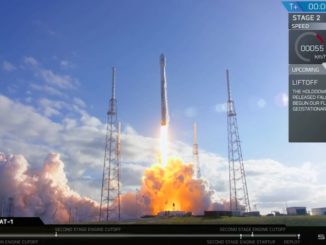
The liftoff of Europe’s first mission to Jupiter aboard an Ariane 5 rocket was scrubbed Thursday in French Guiana due to a high risk of lightning at the launch site, delaying until Friday the start of the JUICE spacecraft’s voyage of exploration.
Arianespace, the Ariane 5 rocket’s commercial operator, called off the countdown around 10 minutes before the scheduled launch time at 8:15 a.m. EDT (1215 UTC) Thursday. A final pre-flight weather briefing indicated a high risk of lightning over the spaceport in Kourou, French Guiana.
The Ariane 5 rocket was expected to be drained of its cryogenic liquid hydrogen and liquid oxygen propellants later Thursday as teams reset for another countdown to begin late Thursday night. Arianespace and the European Space Agency will try again to launch the Ariane 5 rocket with JUICE at 8:14:29 a.m. EDT (1214:29 UTC) Friday, or 9:14 a.m. local time in French Guiana.
The mission has until April 25 to depart Earth and begin its eight-year interplanetary journey, a narrow window of a few weeks constrained by the positions of the planets in the solar system.
The $1.7 billion mission is Europe’s first spacecraft to travel to the outer planets, carrying a suite of 10 science instruments to survey Jupiter and three of its icy moons — Europa, Callisto, and Ganymede. It will take eight years for the JUICE spacecraft, built by Airbus, to reach Jupiter, using a series of planetary flybys with the moon, Earth, and Venus to help give it a boost toward the outer solar system.

The Ariane 5 rocket will initially send JUICE on a trajectory to escape Earth’s gravity and enter a loop around the sun, called a heliocentric orbit. The spacecraft will return to Earth for a flyby in August 2024, using gravity to begin reshaping the probe’s orbit around the sun. The flyby will be the first time a spacecraft performs a gravity assist maneuver with both the Earth and the moon.
A similar gravity assist flyby with Venus is scheduled in August 2025, followed by two more Earth flybys in 2026 and 2029. In a make-or-break moment for the mission, JUICE will fire its main engine to be captured into orbit by Jupiter’s gravity in July 2031. That milestone will begin a series of 35 flybys of Ganymede, Callisto, and Europa, making precise measurements of the thickness of Europa’s global ice sheet and searching for organic molecules.
In 2034, JUICE will steer into an orbit around Ganymede itself for a detailed global survey. Ganymede is the largest moon in the solar system, and the only moon known to have its own magnetic field. Scientists have discovered evidence Ganymede harbors a deep underground ocean of liquid water under an icy crust.
JUICE will be the first-ever spacecraft to orbit one of Jupiter’s moons. It will operate in tandem around Jupiter with NASA’s Europa Clipper spacecraft, which is scheduled for launch from Kennedy Space Center in Florida in October 2024. Europa Clipper will perform a series of close flybys with Europa, one of the solar system’s best candidates for finding signs of life, but will not enter orbit around the icy moon.
The launch of JUICE will mark the penultimate flight of an Ariane 5 rocket, and the 116th Ariane 5 mission since the European launcher debuted in 1996. It will also mark Arianespace’s first flight of 2023, and the company’s 345th mission since 1979.
Email the author.
Follow Stephen Clark on Twitter: @StephenClark1.



